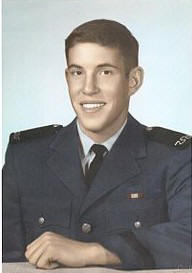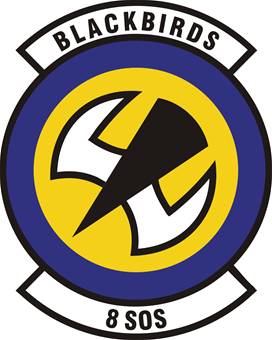THE KNOWN UNKNOWN
The Micheal Blassie Story
By Lieutenant Colonel (Retired) Herman H. Mc Lawhorn
Army of the United States
On May 12, 2009 I received a phone call from a mutual friend telling me that our friend, Theodore Lane Sampley, whom we knew as Ted, had died of a heart attack at age 63. Ted was a veteran of the Vietnam War. He was a member of the Special Forces and had served two tours in Vietnam. His awards are the Combat Infantry Badge, two Bronze Star Medals with V device for Valor, and many others.
I knew Ted as being an advocate for veterans. He produced newsletters for Vietnam War Veterans under the name of “U.S. Veteran Dispatch”. He had organized a non-profit corporation known as “The Last Firebase”. He used the two entities to promote the cause of Vietnam Vets, particularly those that were listed as “Missing in Action”. Although he did not ride two-wheeled motor vehicles, he was one of the founders of “Rolling Thunder”. Each year, “Rolling Thunder”, by the thousands “ride to the Wall” on Memorial Day weekend. He believed with his soul that many of those listed as “missing in action” were alive and held by North Vietnamese Forces.
After the War, he made several trips to the countries that bordered Vietnam. He spent countless hours searching the internet for any information that might shed light on those who did not return. He funded his activities by selling memorabilia by the internet and from a “shack” located on the Mall near the Vietnam Memorial. He led many protests in Washington to keep attention on the “Missing and Prisoners of War”. He had access to Members of Congress who were sympathetic to his cause.
The events that brought Ted Sampley and the family of Micheal John Blassie together began on May 11, 1972. Micheal Blassie was a graduate of the Air Force Academy. He became an aviator and was assigned to the 8th Special Operations Squadron in Vietnam. He flew a small jet aircraft known as the A-37B, nicknamed “The Dragon Fly”. On this eventful day, May 11, 1972, he was flying with his flight commander Major James Connally in support of South Vietnamese forces. Near a place called An Loc, Lieutenant Blassie’s plane took ground fire, exploded, crashed and burned. His wing commander reported that he saw no parachute or activity as he flew over the crash site.
Consequently, Lieutenant Blassie was listed as “killed in action, body not recovered”. His family was so notified. Later, when the area was again under control of ARVN forces, it was learned that several other aircraft had crashed in this same area. Bones from what was thought to be that of Lt. Blassie were recovered and sent to the Central Identification Lab in Hawaii. There they were designated as “X-26” BTB (believed to be) Micheal Blassie. There were several other sets of remains recovered from the same area. Therefore the X-26 remains were re-designated to “Unknown”. They remained at the Lab until May 17, 1984. On that date, the “X-26” remains were selected to be interred as The Vietnam Unknown.
According to Ted and Lieutenant Blassie’s sister, Lieutenant Colonel Pat Blassie, USAF, this is what happened. Ted used the internet while pursuing his quest for information about those reported to be missing. He began looking at crash sites in the An Loc area. As stated above, there were several crash sites but Ted discovered that the remains of X-26 had some valuable clues. The U.S. Veteran Dispatch, July 1994 issue, reported that X-26 had several objects that were also recovered.
He had discovered that the remains chosen by the Central Identification Laboratory in Hawaii to be interred as the Vietnam Unknown was a Caucasian, clue number one. The recovery team for X-26 brought the remnants of a parachute, thus ruling out helicopter crashes since helicopter pilots do not carry parachutes, clue number two. Clue number three was a billfold, a flight suit of an airman, a pistol and a one man inflatable raft, thus ruling out aircrews such as the C-130 crashes in the area.
Ted believed his research was conclusive enough to be the same as artifacts gathered from Micheal Blassie’s A-37 crash site. Before he published the information, he contacted Blassie’s mother and told her he believed he knew where her son Micheal was buried. Michael’s sister, Air Force Lieutenant Colonel Pat Blassie, spoke to an audience at Kinston, North Carolina during the 2002 Veteran’s Day Festival. She spoke of how cautious her family was about the information from Ted. After all, there had been prank calls before, but Ted Sampley’s information seemed to have merit.
Pat read the article after Ted published it in the Dispatch. She then took the information to the Air Force. The Air Force stated there was nothing to prove the remains and the artifacts were those of her brother. Ted sent a copy of his findings to the Pentagon. The powers at the Pentagon assured the Blassie family that “the so called evidence” was wrong. Ted said that the Pentagon had used less circumstantial evidence to declare hundreds others as Missing in Action.
Those of us who had the privilege of knowing Ted learned that he was a very tenacious individual. If he believed in what he was doing, he did not give up. In July 1996, he again published the article in his newspaper. This time he also published it on the internet. A CBS news reporter, Vince Gonzales, read his article and gave Ted a call.
In January 1998, CBS News reported that not only did their investigation point to the artifacts as being those recovered at the Michael Blassie site, but also that the Pentagon knew the identity of the Unknown and covered it up. The report made no mention of Ted Sampley. Even a documentary report shown on the History Channel made no mention of Ted. However when the reporter held up a communication he identified as having been sent to him, just under the heading were the words “by Ted Sampley”.
The Blassie family, with Ted as their cheerleader, and with the help of a Congressman, convinced the Pentagon to disinter the remains of the Unknown for the purpose of a Mitochondrial DNA examination. The test proved that the remains were those belonging to Lieutenant Michael John Blassie. The Secretary of Defense notified the Blassie family on June 30, 1998. It had been 26 years. The unknown was now known.
I retrieved a story from the Military Times. It reported that on July 10, 1998, one of the MC-130’s from the 8th Special Operations Squadron, Lieutenant Blassie’s squadron, flew the remains to St. Louis. Lieutenant Michael John Blassie was buried in the Jefferson Barracks National Cemetery. A flight of fighter planes flew over the grave site as one peeled away and upward, as is the custom for the “missing man”. Theodore “Ted” Sampley’s tenacity had brought one of the 2500 Vietnam Missing in Action home to his family.
From me personally, it was my privilege to have known Ted. He was a guy you could love and hate at the same time. I will miss the chats that we had in the back of his office. A year after his death, a marble pylon honoring him, has been placed on the corner of Herritage and Gordon Streets here in Kinston, North Carolina. Two projects that he founded, The Walk of Honor to honor all veterans who have honorably served and the full size scale replica of the Confederate Gun Boat, the CSS Neuse are nearby.
When Pat Blassie visited Kinston during the 2002 Veterans Day Festival, she brought the artifacts that were found at the crash site. These artifacts were displayed at the Community Council for the Arts. The artifacts were later donated to the Smithsonian in Washington, D. C. by the Blassie Family.
Credits:
Ted Sampley and Pat Blassie
The Military Times, “Lieutenant Michael Blassie, KIA, Unknown No Longer”.
Bonnie Edwards- U.S. Veteran Dispatch, June-October, 1998
Arlington National Cemetery Website-www.arlingtoncemetery.net



